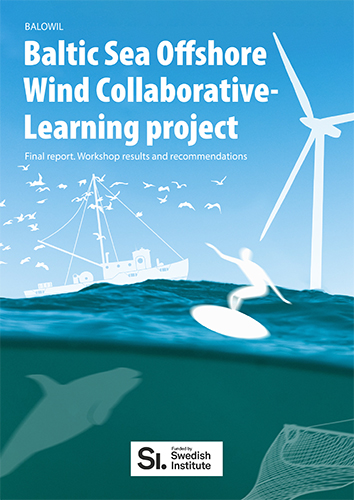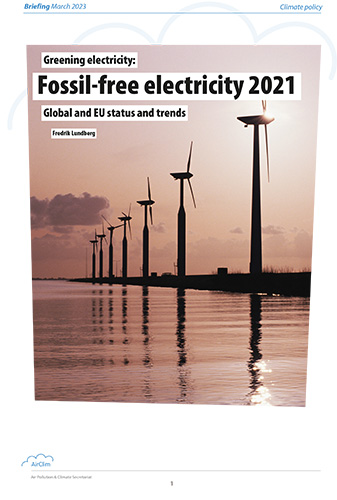
Stricter US standards for road vehicles proposed
 Illustration: Mansikka/flickr.com/Kajsa Lindqvist/CC BY-NC
Illustration: Mansikka/flickr.com/Kajsa Lindqvist/CC BY-NC
The proposed Tier 3 standards should reduce emissions of smog-forming volatile organic compounds and nitrogen oxides by 80 per cent and particulate matter by 70 per cent, compared to today’s car fleet average standards.
A proposed rule to reduce air pollution from passenger cars and trucks was issued by the US Environmental Protection Agency (EPA) in late March. When finalised, the new Tier 3 standards would set new vehicle emissions standards and lower the sulphur content of gasoline starting in 2017.
Considering the vehicle and its fuel as an integrated system, the new vehicle standards would reduce both tailpipe and evaporative emissions from passenger cars, light-duty trucks, medium-duty passenger vehicles, and some heavy-duty vehicles.
The proposed gasoline sulphur standard of 10 parts per million (ppm) would make vehicle emission control systems more effective for both existing and new vehicles, and would enable more stringent vehicle emissions standards, the EPA says, explaining that removing sulphur allows a vehicle’s catalyst to work more efficiently and enables the development of lower-cost technologies to improve fuel economy and reduce greenhouse gas emissions. The proposed sulphur standard is similar to levels already being achieved in California, Europe, Japan, South Korea, and several other countries.
The Tier 3 vehicle emission standards, combined with the proposed sulphur limit, would reduce motor vehicle emissions of nitrogen oxides (NOx), volatile organic compounds (VOCs), particulate matter (PM2.5), carbon monoxide (CO) and air toxics, such as benzene and 1,3-butadiene.
Compared to current standards, the proposed tailpipe standards for light-duty vehicles represent an 80 per cent reduction of VOCs and NOx from today’s fleet average and a 70 per cent reduction in per-vehicle PM standards. For heavy-duty vehicles, the proposed new standards mean a 60 per cent reduction in both fleet average VOCs and NOx emissions and per-vehicle PM standards. It is also proposed to extend the period during which the standards apply from 120,000 miles to 150,000 miles.
A study by the National Association of Clean Air Agencies (NACAA) on the costs and benefits of the Tier 3 proposal, estimates that by 2030 it will reduce mobile source emissions of NOx, VOCs and CO by 29, 26 and 38 per cent, respectively.
EPA estimates that the proposed cleaner fuels and cars programme will by 2030 annually prevent up to 2,400 premature deaths, 23,000 cases of respiratory ailments in children, 3,200 hospital admissions and asthma-related emergency room visits, and 1.8 million lost school days, work days and days when activities would be restricted due to air pollution. Total health-related benefits in 2030 will be between US$8 and 23 billion annually.
The annual cost of the overall programme in 2030 is estimated at US$3.4 billion, which means that the proposal would provide up to seven dollars in health benefits for every dollar spent to meet the standards. The proposed sulphur standards will cost refineries less than a penny per gallon of gasoline on average, and the proposed vehicle standards will have an average cost of about US$130 per vehicle in 2025.
The Tier 3 proposal is harmonised with the California Air Resources Board Low-Emission Vehicle (LEV III) programme, so automakers could sell the same vehicles in all 50 states. It is aligned with and designed to be implemented over the same timeframe as EPA’s programme for reducing greenhouse gas emissions from light-duty vehicles starting in model year 2017.
Paul Billings, senior vice president of the American Lung Association, said, “We support cleaner gasoline and vehicles standards. We will carefully review the proposal and file detailed comments to support the maximum pollution reductions. The American Lung Association will encourage the public to weigh in during EPA’s public comment period. These new standards must not be delayed. EPA must set the cleaner gasoline and vehicle standards before the end of the year.”
Once published in the Federal Register, the proposal will be available for public comment and EPA will hold public hearings to receive further public input.
Christer Ågren
Sources: US EPA press release, 29 March 2013, Environment News Service, 1 April 2013.
Information: http://www.epa.gov/otaq/tier3.htm

 Download this issue
Download this issue

























